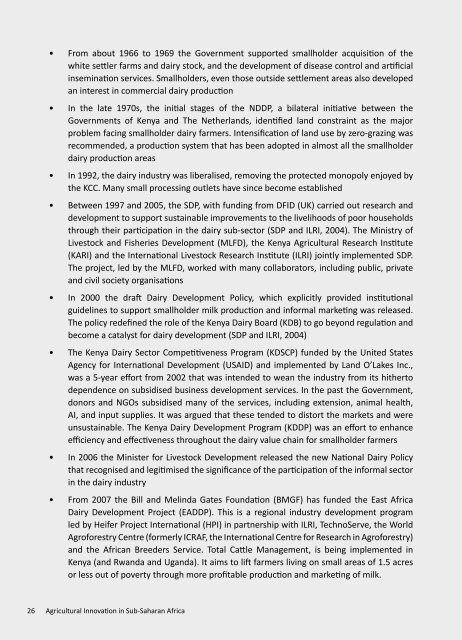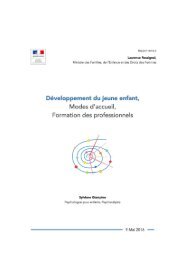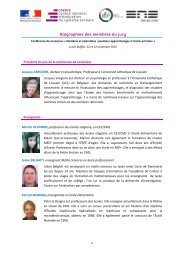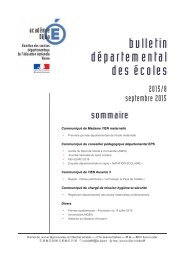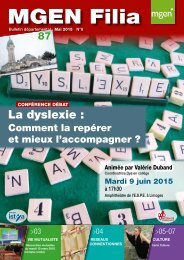agrl_innovations_in_ssa.pdf?utm_content=buffercb41d&utm_medium=social&utm_source=twitter
agrl_innovations_in_ssa.pdf?utm_content=buffercb41d&utm_medium=social&utm_source=twitter
agrl_innovations_in_ssa.pdf?utm_content=buffercb41d&utm_medium=social&utm_source=twitter
Create successful ePaper yourself
Turn your PDF publications into a flip-book with our unique Google optimized e-Paper software.
• From about 1966 to 1969 the Government supported smallholder acquisition of the<br />
white settler farms and dairy stock, and the development of disease control and artificial<br />
<strong>in</strong>sem<strong>in</strong>ation services. Smallholders, even those outside settlement areas also developed<br />
an <strong>in</strong>terest <strong>in</strong> commercial dairy production<br />
• In the late 1970s, the <strong>in</strong>itial stages of the NDDP, a bilateral <strong>in</strong>itiative between the<br />
Governments of Kenya and The Netherlands, identified land constra<strong>in</strong>t as the major<br />
problem fac<strong>in</strong>g smallholder dairy farmers. Intensification of land use by zero-graz<strong>in</strong>g was<br />
recommended, a production system that has been adopted <strong>in</strong> almost all the smallholder<br />
dairy production areas<br />
• In 1992, the dairy <strong>in</strong>dustry was liberalised, remov<strong>in</strong>g the protected monopoly enjoyed by<br />
the KCC. Many small process<strong>in</strong>g outlets have s<strong>in</strong>ce become established<br />
• Between 1997 and 2005, the SDP, with fund<strong>in</strong>g from DFID (UK) carried out research and<br />
development to support susta<strong>in</strong>able improvements to the livelihoods of poor households<br />
through their participation <strong>in</strong> the dairy sub-sector (SDP and ILRI, 2004). The M<strong>in</strong>istry of<br />
Livestock and Fisheries Development (MLFD), the Kenya Agricultural Research Institute<br />
(KARI) and the International Livestock Research Institute (ILRI) jo<strong>in</strong>tly implemented SDP.<br />
The project, led by the MLFD, worked with many collaborators, <strong>in</strong>clud<strong>in</strong>g public, private<br />
and civil society organisations<br />
• In 2000 the draft Dairy Development Policy, which explicitly provided <strong>in</strong>stitutional<br />
guidel<strong>in</strong>es to support smallholder milk production and <strong>in</strong>formal market<strong>in</strong>g was released.<br />
The policy redef<strong>in</strong>ed the role of the Kenya Dairy Board (KDB) to go beyond regulation and<br />
become a catalyst for dairy development (SDP and ILRI, 2004)<br />
• The Kenya Dairy Sector Competitiveness Program (KDSCP) funded by the United States<br />
Agency for International Development (USAID) and implemented by Land O’Lakes Inc.,<br />
was a 5-year effort from 2002 that was <strong>in</strong>tended to wean the <strong>in</strong>dustry from its hitherto<br />
dependence on subsidised bus<strong>in</strong>ess development services. In the past the Government,<br />
donors and NGOs subsidised many of the services, <strong>in</strong>clud<strong>in</strong>g extension, animal health,<br />
AI, and <strong>in</strong>put supplies. It was argued that these tended to distort the markets and were<br />
unsusta<strong>in</strong>able. The Kenya Dairy Development Program (KDDP) was an effort to enhance<br />
efficiency and effectiveness throughout the dairy value cha<strong>in</strong> for smallholder farmers<br />
• In 2006 the M<strong>in</strong>ister for Livestock Development released the new National Dairy Policy<br />
that recognised and legitimised the significance of the participation of the <strong>in</strong>formal sector<br />
<strong>in</strong> the dairy <strong>in</strong>dustry<br />
• From 2007 the Bill and Mel<strong>in</strong>da Gates Foundation (BMGF) has funded the East Africa<br />
Dairy Development Project (EADDP). This is a regional <strong>in</strong>dustry development program<br />
led by Heifer Project International (HPI) <strong>in</strong> partnership with ILRI, TechnoServe, the World<br />
Agroforestry Centre (formerly ICRAF, the International Centre for Research <strong>in</strong> Agroforestry)<br />
and the African Breeders Service. Total Cattle Management, is be<strong>in</strong>g implemented <strong>in</strong><br />
Kenya (and Rwanda and Uganda). It aims to lift farmers liv<strong>in</strong>g on small areas of 1.5 acres<br />
or less out of poverty through more profitable production and market<strong>in</strong>g of milk.<br />
26 Agricultural Innovation <strong>in</strong> Sub-Saharan Africa


